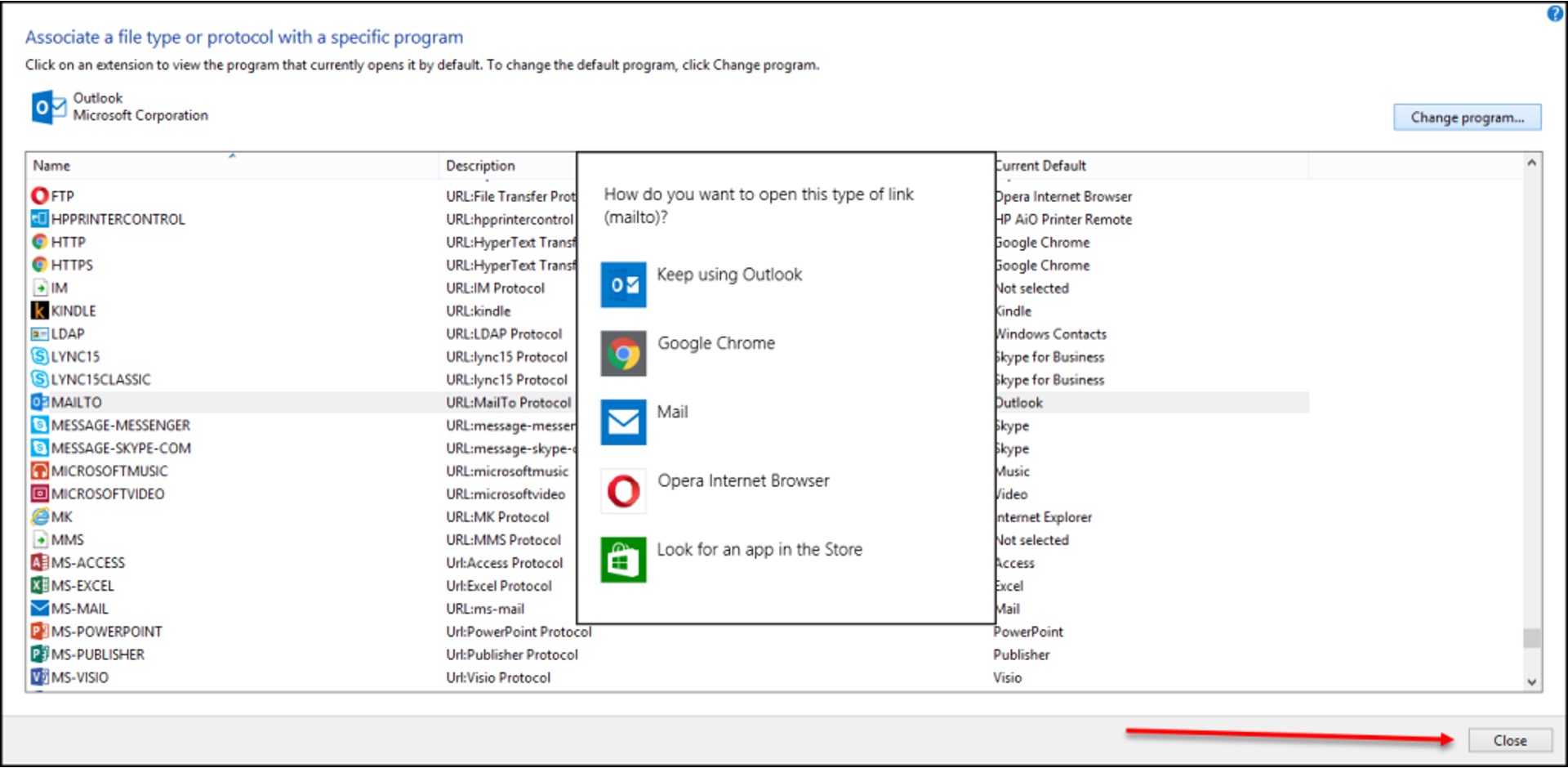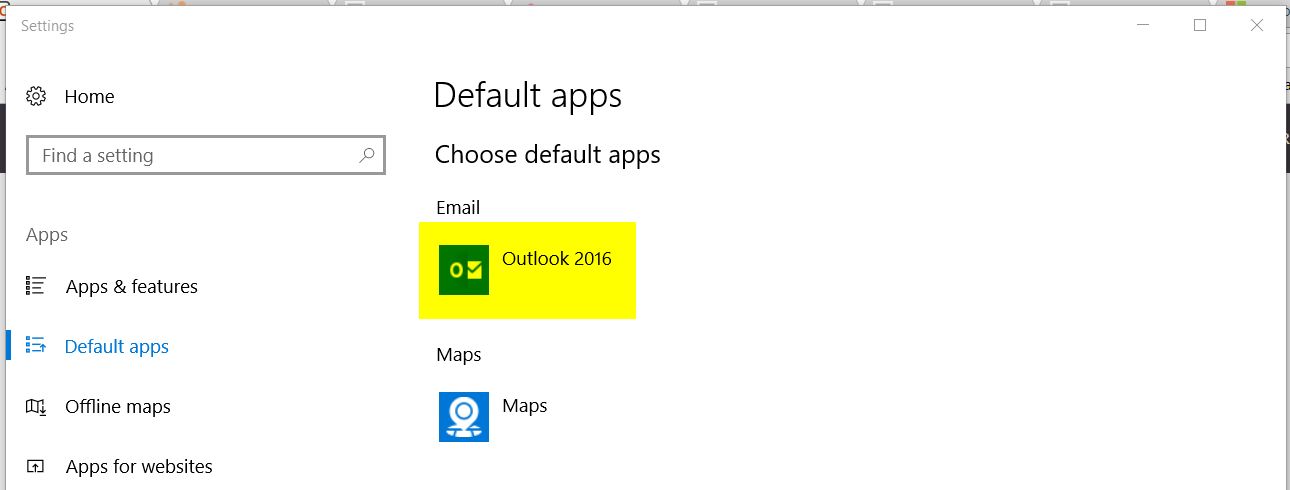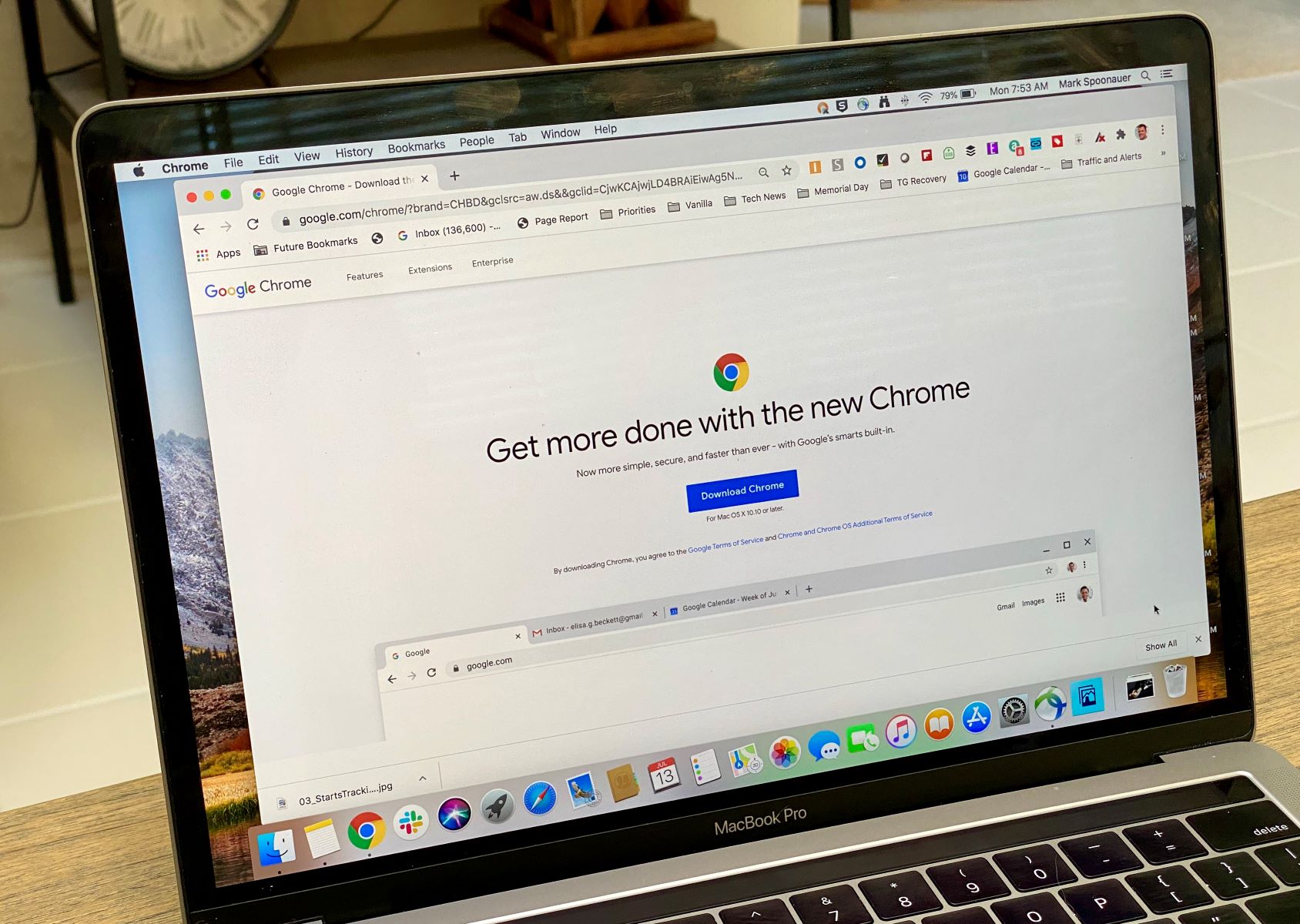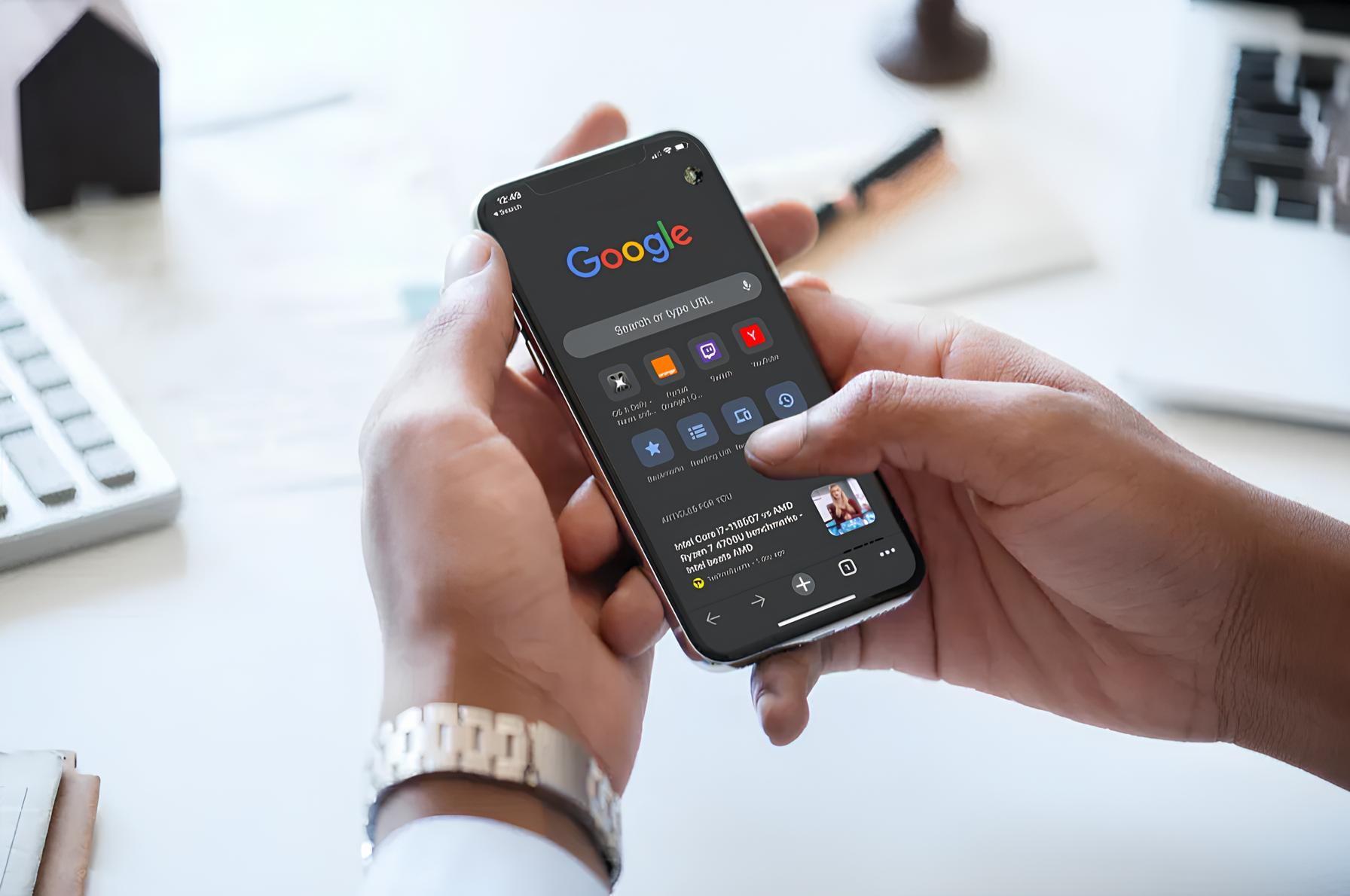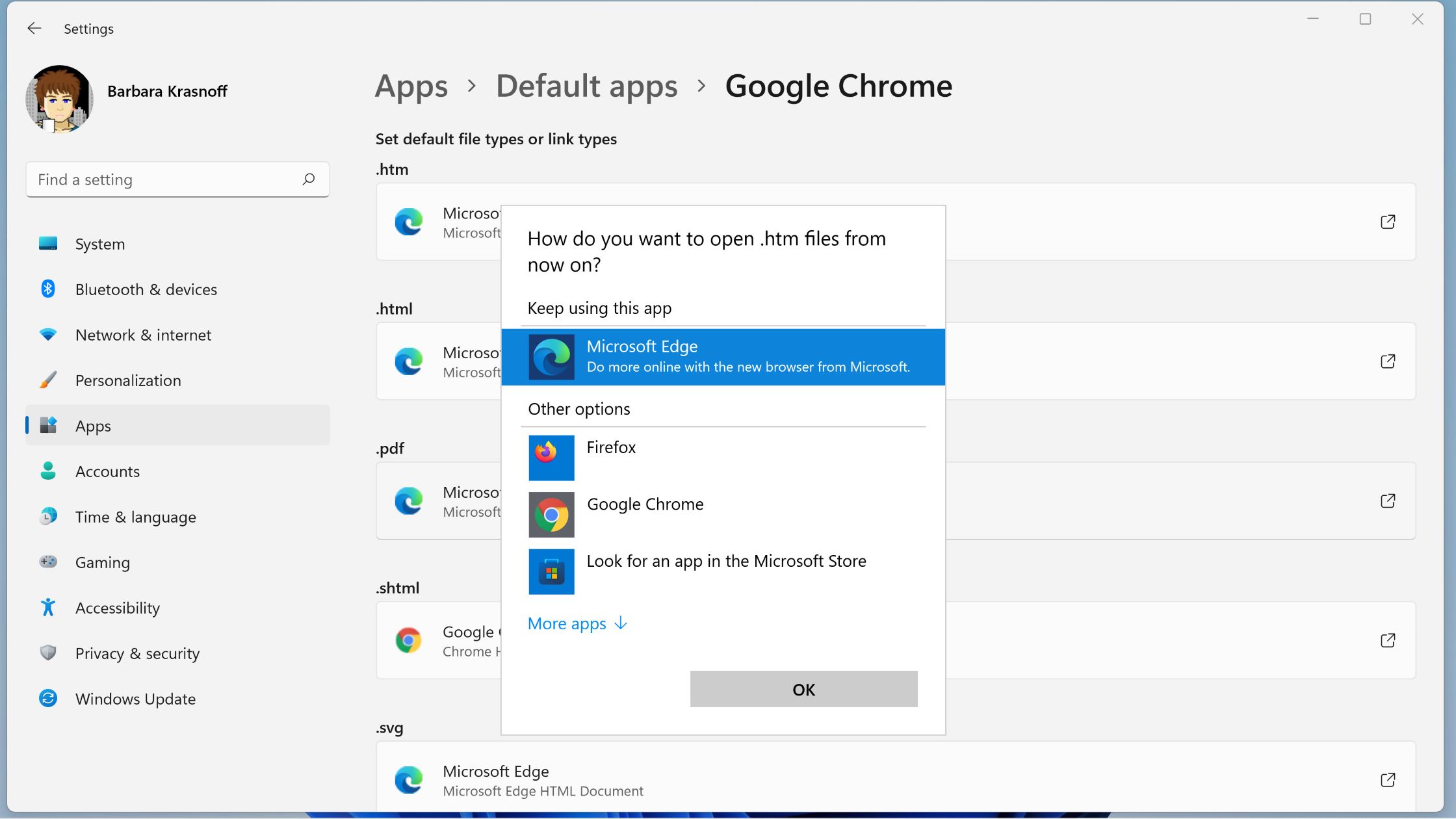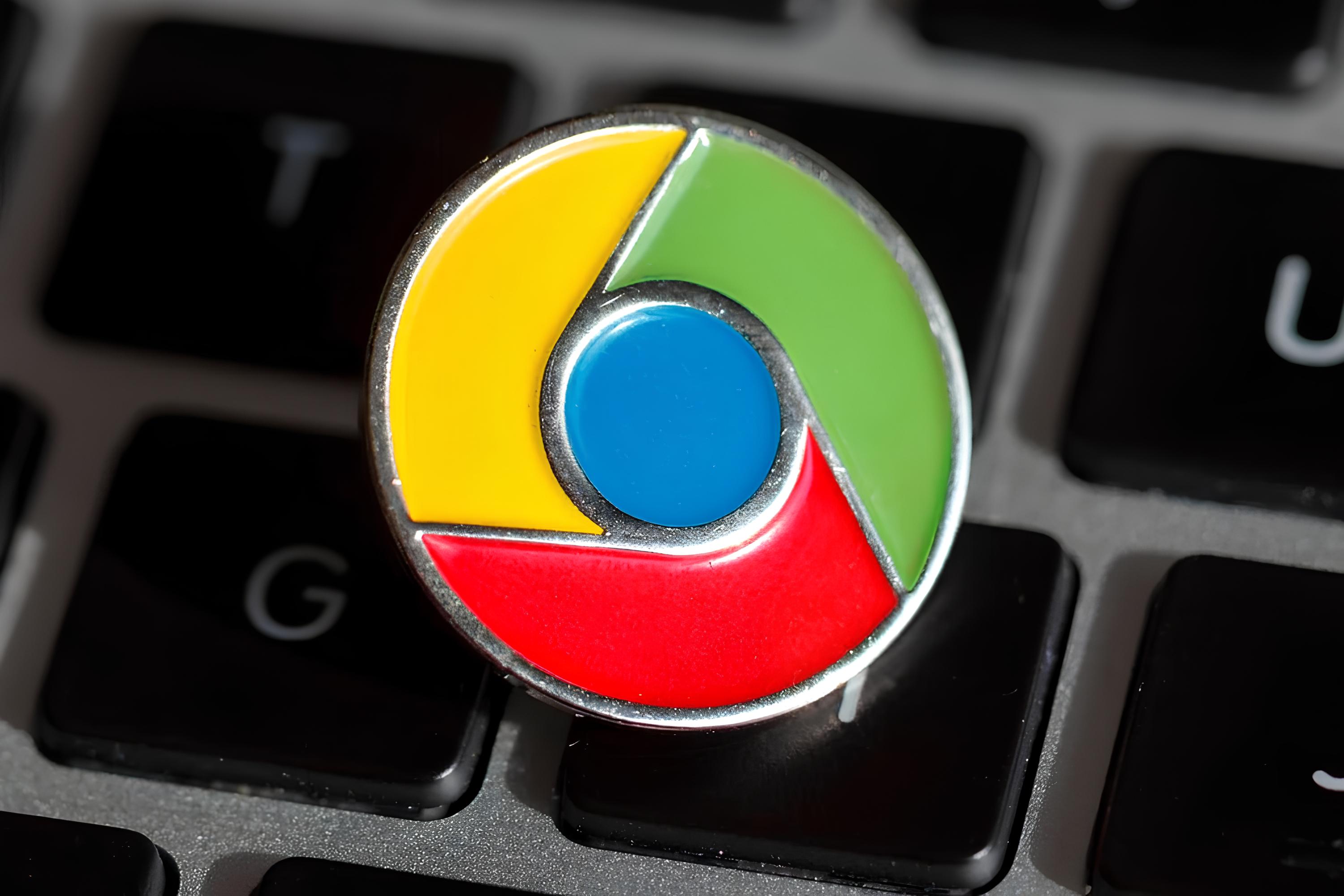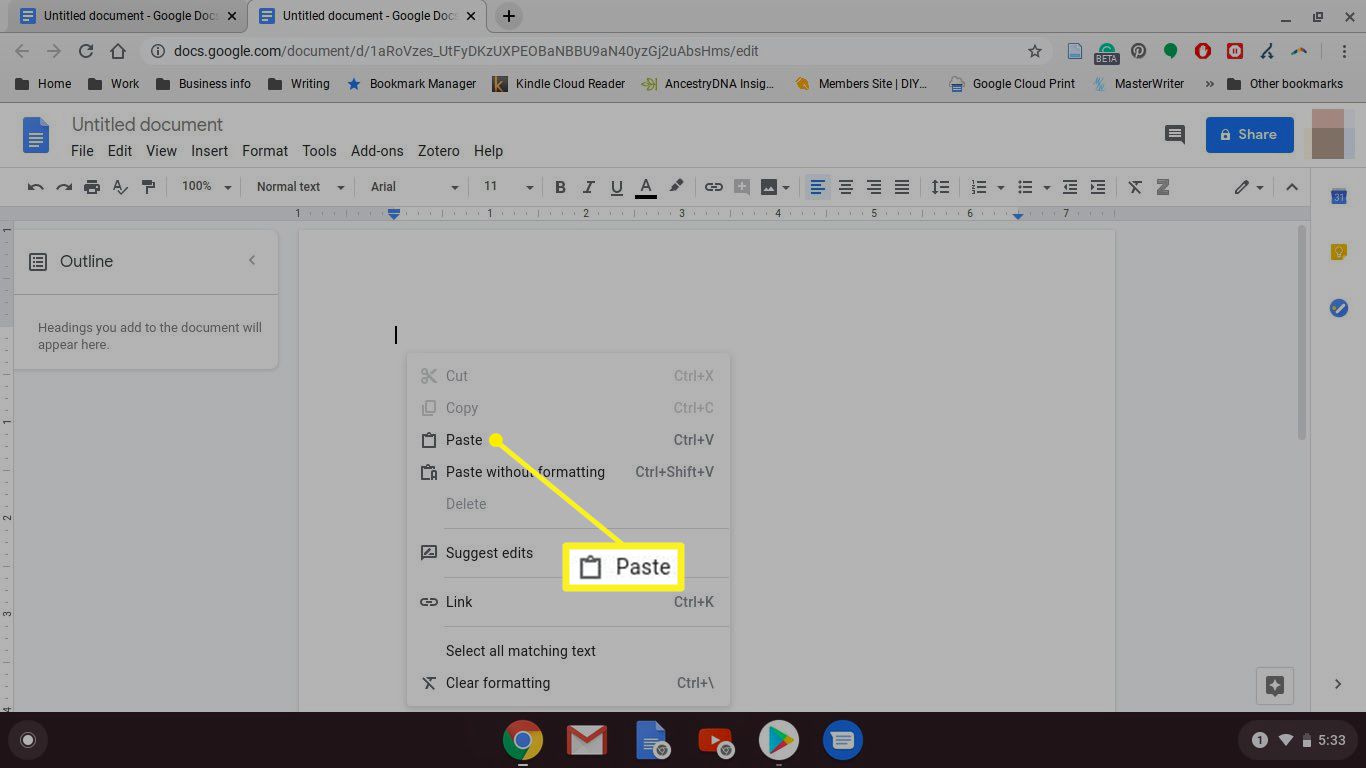Introduction
When it comes to browsing the web, Google Chrome stands out as one of the most popular and versatile web browsers available. Its user-friendly interface, robust features, and seamless integration with various applications make it a top choice for many users. One such integration that enhances the browsing experience is the ability to open email links directly in Chrome. This feature streamlines the process of accessing and managing emails, allowing for a more efficient and convenient workflow.
In this comprehensive guide, we will delve into the intricacies of setting Chrome as the default email client and configuring it to open email links seamlessly. Whether you're using a Windows PC or a Mac, we've got you covered with step-by-step instructions to simplify the process. Additionally, we'll address common troubleshooting issues that may arise, ensuring that you can make the most of this functionality without any hiccups.
By the end of this guide, you'll have a clear understanding of how to optimize your browsing experience by seamlessly integrating email functionality with Google Chrome. Let's embark on this journey to unlock the full potential of your web browsing and email management capabilities.
Setting Chrome as the default email client
Setting Google Chrome as the default email client on your computer allows you to streamline your email management process, ensuring that email links open directly in Chrome. This integration simplifies the workflow, enabling quick access to your emails without the need to switch between applications. Whether you use web-based email services or desktop email clients, configuring Chrome as the default email handler can significantly enhance your browsing experience.
To begin, let's explore the steps to set Chrome as the default email client on both Windows and Mac operating systems.
Windows:
-
Open Chrome Settings: Launch Google Chrome and click on the three-dot menu icon located in the top-right corner of the browser window. From the dropdown menu, select "Settings."
-
Navigate to Default Browser Settings: In the Settings menu, scroll down and click on "Advanced" to expand the options. Then, under the "Privacy and security" section, select "Site settings."
-
Set Default Email Handler: Within the Site settings, locate and click on "Handlers." Toggle the switch next to "Allow sites to ask to become default handlers for protocols (recommended)" to enable this feature.
-
Grant Permission: Once the option is enabled, visit a website that contains an email link. Chrome will prompt you to allow the site to become the default email handler. Click "Allow" to grant permission.
-
Confirm Default Email Handler: After granting permission, revisit the Site settings and click on "Handlers" to verify that Chrome is now set as the default email handler.
Mac:
-
Access Chrome Preferences: Launch Google Chrome and click on "Chrome" in the top menu bar. From the dropdown menu, select "Preferences."
-
Configure Default Email Handler: In the Preferences window, navigate to the "Settings" section. Here, you can select Chrome as the default email handler by clicking on the "Make default" button next to "Mailto" links.
By following these straightforward steps, you can seamlessly set Google Chrome as the default email client on your Windows or Mac computer. This integration ensures that email links open directly in Chrome, providing a more efficient and streamlined email management experience.
With Chrome configured as the default email client, you can enjoy the convenience of accessing your emails seamlessly while browsing the web, ultimately optimizing your overall productivity and workflow.
Opening email links in Chrome on Windows
Configuring Google Chrome to open email links seamlessly on a Windows computer enhances the overall browsing experience, streamlining the process of accessing and managing emails. By following a few simple steps, you can ensure that email links open directly in Chrome, eliminating the need to switch between applications and providing a more efficient workflow.
To begin, it's essential to ensure that Google Chrome is set as the default email client on your Windows PC. Once this configuration is in place, you can proceed with the following steps to enable the seamless opening of email links in Chrome:
-
Open Chrome Settings: Launch Google Chrome and navigate to the three-dot menu icon located in the top-right corner of the browser window. From the dropdown menu, select "Settings" to access the browser's configuration options.
-
Navigate to Default Browser Settings: Within the Settings menu, scroll down and click on "Advanced" to reveal additional options. Under the "Privacy and security" section, select "Site settings" to access site-specific preferences and permissions.
-
Set Default Email Handler: Within the Site settings, locate and click on "Handlers." Here, you can toggle the switch next to "Allow sites to ask to become default handlers for protocols (recommended)" to enable this feature, granting websites the ability to request to become the default handler for specific protocols.
-
Grant Permission: Once the option is enabled, visit a website that contains an email link. Chrome will prompt you to allow the site to become the default email handler. Simply click "Allow" to grant the necessary permission.
-
Confirm Default Email Handler: After granting permission, revisit the Site settings and click on "Handlers" to verify that Chrome is now set as the default email handler. This step ensures that email links will seamlessly open in Chrome when accessed from web pages.
By following these straightforward steps, you can ensure that email links open directly in Google Chrome on your Windows computer, providing a more streamlined and efficient email management experience. This integration simplifies the process of accessing and interacting with emails while browsing the web, ultimately enhancing your overall productivity and workflow.
Opening email links in Chrome on Mac
Configuring Google Chrome to seamlessly open email links on a Mac computer enhances the overall browsing experience, streamlining the process of accessing and managing emails. By following a few simple steps, you can ensure that email links open directly in Chrome, eliminating the need to switch between applications and providing a more efficient workflow.
To begin, it's essential to ensure that Google Chrome is set as the default email client on your Mac. Once this configuration is in place, you can proceed with the following steps to enable the seamless opening of email links in Chrome:
-
Access Chrome Preferences: Launch Google Chrome and click on "Chrome" in the top menu bar. From the dropdown menu, select "Preferences" to access the browser's configuration options.
-
Configure Default Email Handler: In the Preferences window, navigate to the "Settings" section. Here, you can select Chrome as the default email handler by clicking on the "Make default" button next to "Mailto" links.
By following these straightforward steps, you can ensure that email links open directly in Google Chrome on your Mac, providing a more streamlined and efficient email management experience. This integration simplifies the process of accessing and interacting with emails while browsing the web, ultimately enhancing your overall productivity and workflow.
Troubleshooting common issues
While setting up Google Chrome as the default email client and configuring it to open email links seamlessly can greatly enhance your browsing experience, you may encounter common issues that can hinder this functionality. Understanding and addressing these issues is crucial to ensuring a smooth and efficient workflow when managing emails through Chrome. Here are some common problems you may encounter and their corresponding troubleshooting steps:
1. Email links open in a different browser or email client:
If you find that email links are opening in a browser or email client other than Google Chrome, it may indicate that the default email handler settings are not configured correctly. To troubleshoot this issue, follow these steps:
-
Windows:
- Go to the Windows Settings app.
- Select "Apps" and then click on "Default apps" in the left sidebar.
- Scroll down to the "Email" section and ensure that Google Chrome is set as the default email app.
-
Mac:
- Open the Apple menu and select "System Preferences."
- Click on "Internet Accounts" and ensure that your email account is set up to use Google Chrome for mailto links.
2. Permission prompts do not appear when visiting websites with email links:
If Chrome is not prompting you to allow websites to become the default email handler when visiting sites with email links, the browser's permissions may need to be adjusted. To troubleshoot this issue, follow these steps:
- Windows and Mac:
- Open Chrome settings and navigate to the "Site settings" or "Content settings" section.
- Ensure that the option to "Ask when a site wants to become default handler for a protocol" is enabled.
3. Inability to set Chrome as the default email handler:
If you encounter difficulties in setting Google Chrome as the default email handler, it may be due to system or browser-specific settings. To troubleshoot this issue, follow these steps:
- Windows and Mac:
- Ensure that Chrome is updated to the latest version.
- Check for any system or browser updates that may address compatibility issues related to default email handler settings.
By addressing these common issues through the suggested troubleshooting steps, you can overcome potential obstacles and ensure that Google Chrome seamlessly handles email links as the default email client. This troubleshooting process empowers you to optimize your browsing experience and streamline your email management workflow, ultimately enhancing your productivity and efficiency.
Conclusion
In conclusion, the seamless integration of email functionality with Google Chrome offers a myriad of benefits, enhancing the overall browsing experience and streamlining email management. By setting Chrome as the default email client and configuring it to open email links seamlessly, users can enjoy a more efficient workflow, quick access to emails, and a cohesive browsing experience. Whether you're using a Windows PC or a Mac, the step-by-step instructions provided in this guide empower you to optimize your email management capabilities with Chrome.
By following the outlined procedures, users can ensure that email links open directly in Google Chrome, eliminating the need to switch between applications and providing a more streamlined approach to accessing and interacting with emails. This integration not only saves time but also enhances productivity by seamlessly integrating email functionality with web browsing.
Furthermore, the troubleshooting tips provided in this guide equip users with the knowledge to address common issues that may arise during the setup process. By understanding and resolving these issues, users can overcome potential obstacles and ensure that Google Chrome serves as the default email handler, delivering a seamless and efficient email management experience.
Ultimately, the ability to open email links in Chrome enhances the convenience and productivity of users, allowing for a seamless transition between browsing the web and managing emails. This integration reflects the adaptability and versatility of Google Chrome as a web browser, catering to the diverse needs of users and providing a cohesive platform for both web browsing and email management.
In essence, by leveraging the capabilities of Google Chrome as the default email client, users can unlock the full potential of their browsing experience, seamlessly integrating email functionality and streamlining their workflow. This comprehensive guide empowers users to harness the power of Chrome, transforming the way they access and manage emails while navigating the web.









